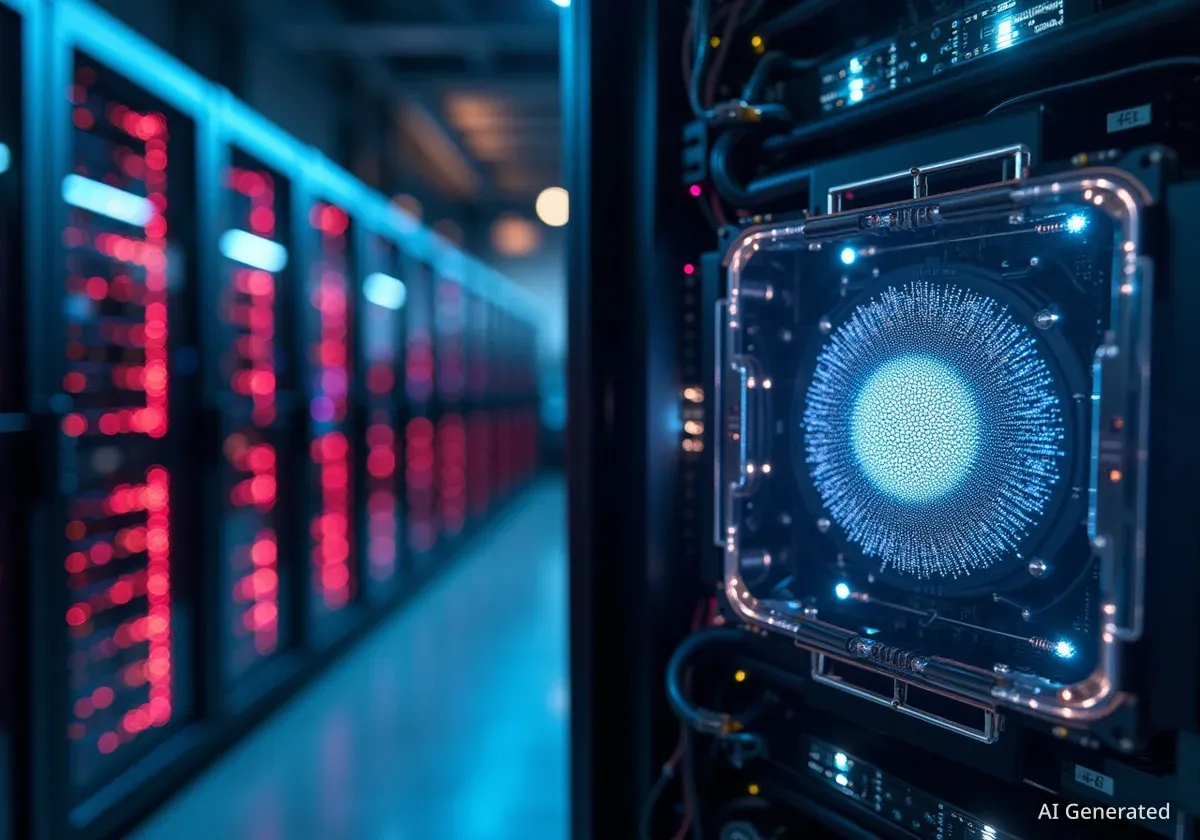Investors evaluating the future of artificial intelligence face a choice between established market leaders and emerging technologies. Nvidia, the current giant in AI hardware, is being challenged by companies like D-Wave Quantum, which leverages quantum computing to solve complex AI problems. A detailed comparison of their technology, financial health, and market valuation reveals two distinct investment paths.
Key Takeaways
- Nvidia is a highly profitable leader in classical AI hardware, while D-Wave is a specialist in the emerging field of quantum computing for AI, currently operating at a loss.
- D-Wave's annealing quantum computers are designed for optimization problems, demonstrating significant speed advantages over classical supercomputers for specific tasks.
- Nvidia's new Blackwell platform not only powers large-scale AI models but also aims to bridge the gap between classical and quantum computing.
- Financially, Nvidia reported $28.4 billion in operating income in its recent quarter, whereas D-Wave posted an operating loss of $26.5 million.
- Despite its lack of profitability, D-Wave's stock valuation, measured by its price-to-sales ratio, is significantly higher than Nvidia's, indicating high market expectations.
D-Wave's Quantum Approach to AI
D-Wave Quantum is pioneering a specific type of quantum computing known as annealing. This method is particularly effective at finding the optimal solution from a vast set of possibilities, a common challenge in AI and machine learning.
The company has demonstrated the power of this approach by solving complex calculations in minutes. According to D-Wave, these same problems would require an estimated 1 million years for a classical supercomputer to complete. This highlights the potential for quantum systems to tackle problems currently beyond our reach.
What is Quantum Annealing?
Quantum annealing is a process used by D-Wave's computers to find the lowest energy state of a system, which corresponds to the best solution for an optimization problem. It is different from gate-based quantum computers, which are designed for a wider range of algorithms but are often more susceptible to errors.
To make its technology more accessible, D-Wave released an AI toolkit this year. This software allows developers to connect its quantum systems with PyTorch, one of the most popular frameworks for building AI models. The company described this as a "milestone in quantum AI development," aiming to reduce the escalating costs associated with training large AI models.
Financial Performance and Challenges
D-Wave's technological progress is reflected in its revenue growth. For its second quarter, the company reported revenue of $3.1 million, a 42% increase compared to the same period last year. This growth is supported by adoption from research centers in Germany, Canada, and Japan, which are using D-Wave's machines to advance AI research.
However, the company's expenses remain high. Operating expenses in the second quarter grew 41% year over year to $28.5 million. This resulted in a significant operating loss of $26.5 million, underscoring the financial challenges faced by companies in the capital-intensive quantum computing sector.
Nvidia's Dominance and Hybrid Strategy
Nvidia is the undisputed leader in the current AI revolution, powered by its advanced semiconductor chips. Its hardware is the foundation for many generative AI applications, including OpenAI's ChatGPT. The company continues to push the limits of classical computing with its latest platform, Blackwell.
The Blackwell system is engineered to handle the largest and most complex AI models. It achieves this by combining multiple semiconductor chips into a single, powerful superchip. These superchips are then integrated into server racks that function as massive, unified computer processors.
The Scale of Blackwell
A single server rack equipped with Nvidia's Blackwell components weighs over a ton. This illustrates the immense physical and computational infrastructure required to train and run today's most advanced artificial intelligence systems.
Interestingly, Nvidia is positioning Blackwell as a bridge to the quantum era. The platform allows users to develop and simulate quantum software applications without requiring direct access to a physical quantum computer. Nvidia's strategy anticipates a future where classical and quantum computers work in a hybrid model.
"Nvidia envisions a period where quantum and classical computers depend on each other," a company representative noted. This approach aims to use the strengths of classical computing to mitigate the current weaknesses of quantum devices, such as high error rates.
Strong Financial Position
Nvidia's market leadership translates directly into powerful financial results. For its fiscal second quarter ending July 27, the company reported revenue of $46.7 billion, a 56% increase year over year. Blackwell sales were a significant contributor, rising 17% from the previous quarter.
This revenue growth has led to substantial profitability. Operating income for the quarter climbed 53% year over year to $28.4 billion. This financial strength allows Nvidia to make strategic investments, including recent multibillion-dollar commitments to Intel and OpenAI to expand AI infrastructure.
Comparing Market Valuations
When comparing D-Wave and Nvidia as investments, their stock valuations present a stark contrast. While D-Wave's stock surged over 200% in early 2025, Nvidia also saw a robust gain of more than 30% during the same period.
A key metric for valuing a non-profitable company like D-Wave is the price-to-sales (P/S) ratio. Recent market activity has pushed D-Wave's P/S ratio to a level more than 10 times higher than Nvidia's. This suggests that, relative to its current sales, D-Wave's stock is valued much more richly than the established and profitable Nvidia.
This high valuation reflects investor optimism about the long-term potential of quantum computing. However, it also represents significant risk. The technology is still in its early stages, and it is unclear which company or approach will ultimately dominate the quantum landscape.
Investment Outlook: Profitability vs Potential
The choice between investing in D-Wave Quantum and Nvidia comes down to an investor's risk tolerance and time horizon. D-Wave represents a high-risk, high-reward bet on a disruptive technology that could redefine computing.
The company's growing operating losses against minimal revenue are a major concern. If this trend continues without a clear path to profitability, D-Wave could face financial difficulties. The quantum computing field is also highly competitive, with no guarantee that D-Wave's technology will become the industry standard.
In contrast, Nvidia offers a more stable and proven investment in the AI sector. Its Blackwell platform is already generating massive revenue and profits. Furthermore, Nvidia's hybrid strategy allows it to benefit from the growth of quantum computing without being solely dependent on it. This approach enables partnerships with D-Wave and other quantum firms, positioning Nvidia to thrive regardless of which specific quantum technology succeeds.
Considering its profitability, strategic market position, more reasonable valuation, and its role in bridging classical and quantum computing, Nvidia currently stands as the more fundamentally sound AI investment. It is a company executing at a high level in the present while preparing for the computational paradigms of the future.





